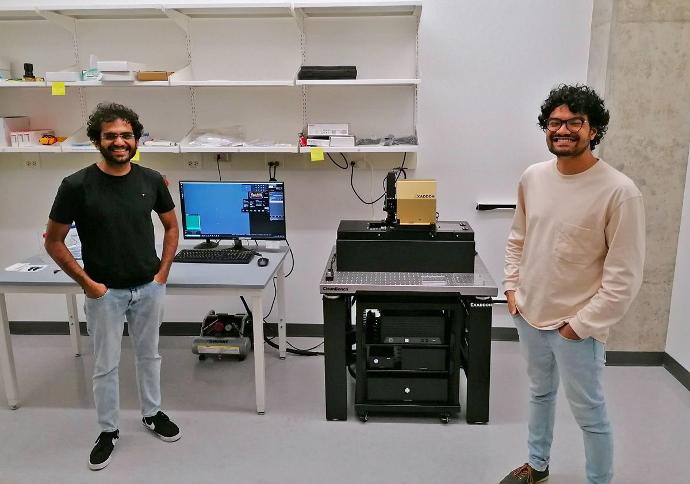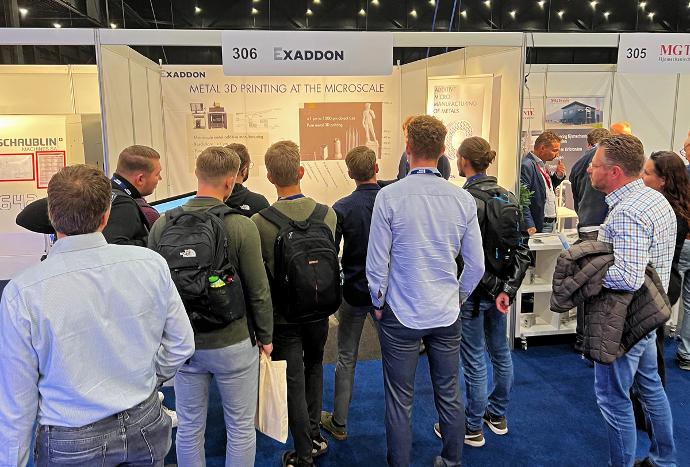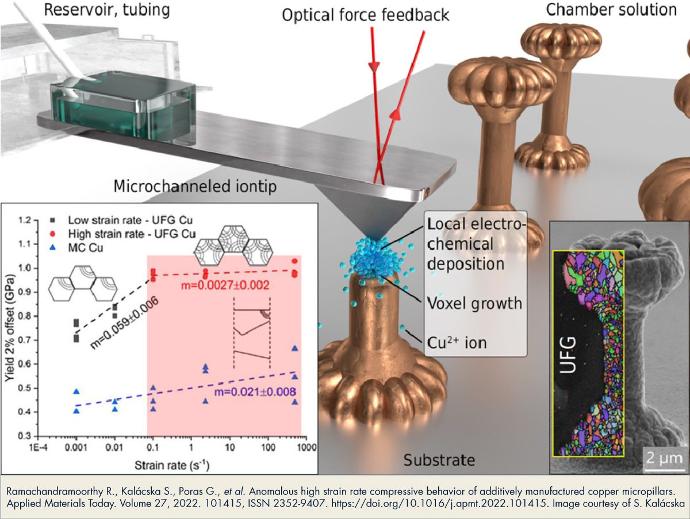What were the key developments in the world of additive micromanufacturing (μAM) in 2022?
From system sales in 3 continents to new research published in high-level journals, new team members to new distribution partners, last year was one of progress and expansion on all fronts. Read below to see what the biggest news and advances were for Exaddon in 2022.
CERES Print System Sales and Installations
First off, CERES system sales and installations in 3 continents show the increasing interest in μAM as an enabling technology for fundamental research applications. From waveguides for boosting signal strength in 5G applications, microstructures for materials science characterization, through to neural needles for brain-computer interfaces, it is fascinating to see the cutting-edge developments which our customers are realizing with our technology.

Introducing μAM to New Audiences at Conferences and Exhibitions
Exaddon was on the road exhibiting and presenting at various micro- and nanotechnology conferences, and the reception was fantastic to see. As more scientists within both academia and industry discover the possibilities which microscale additive manufacturing can enable, the excitement only grows.
Especially impressive was the interest from younger exhibition visitors at Precision Fair 2022 in the Netherlands, where the Exaddon booth was frequently standing room only.

Scientific Publications in Key Journals
In terms of scientific publications, some fascinating papers were published in 2022, and we encourage you to read further and discover the latest developments in the 3D printing of microscale metal structures.
1. A collaboration between Exaddon, Goethe University, and Ferdinand-Braun-Institut, Leibniz-Institut für Höchstfrequenztechnik, published in IEEE Xplore Transactions on Electron Devices, demonstrates how Exaddon’s additive micromanufacturing (μAM) was used to fabricate microscale helices for use in travelling-wave tubes (TWTs), a crucial component for the realization of 5G networks. Read more
2. A research collaboration between Exaddon, EMPA, and Max-Planck-Institut für Eisenforschung has resulted in novel research into the dynamic strain properties of 3D printed copper micropillars. The paper, published in Applied Materials Today, showed very high yield strength of the µAM copper over all speeds. Read more
3. A Chinese research effort between members of Jilin University and Changchun University of Science and Technology (CUST) describes their use of localized electrochemical deposition (using the Exaddon CERES system) to additively manufacture microscale copper structures. Read more
4. In a joint research project involving Exaddon, North Carolina State University and the University of North Carolina at Chapel Hill, hollow microneedles were created out of copper. Published in Materials Research Society Advances, the study demonstrates the potential use of Exaddon's pioneering metal additive micromanufacturing (µAM) technology to manufacture hollow copper needles for drug delivery. Read more

The Exaddon Team is Growing!
With so many developments with our customers, technology, and company goals, Exaddon is expanding in various departments in order to further advance our technology and its impact.
We are currently hiring for R&D staff - check out the posting here, and please forward it to anyone in your network who may be suitable!
Exaddon's 2022 Year in Review